The History of the Railroad Article 11
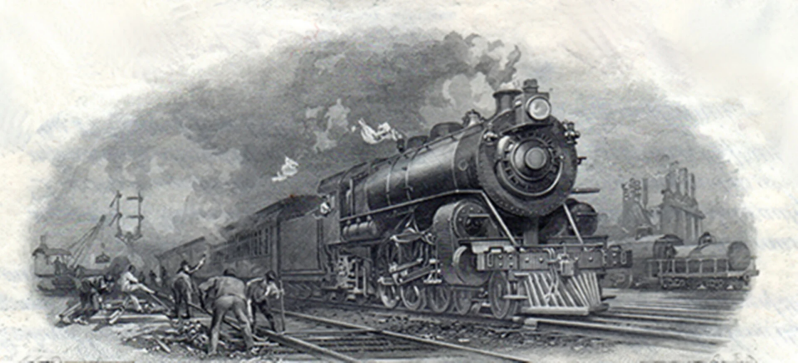
The Building of the Railroad
Laying Track Part 2
Early companies such as the Baltimore and Ohio, Camden and Amboy, and the Delaware and Hudson Canal Company set the standard for a lot of railroad innovations. If you read about the beginnings of the steam locomotive and the railroad, you will see their names pop up many times.
They were instrumental in the development of the spike. At first, they used a common nail or peg, but they would loosen or pop out. The rails would shudder and fail. This could cause the derailment of the train.
Then Colonel Robert Stevens developed the “T” rail. This helped in the design process for the spike. Stevens also invented large the large hook nail that was the predecessor to the current day spike. They were also referred to as a cut spike or a crampon spike.
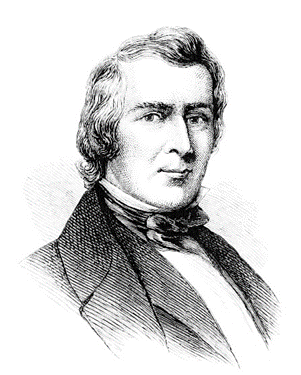
Col. Robert Stevens
Popular Science Monthly Volume 12,
Public domain, via Wikimedia Commons
They experimented with various ideas over the years. They tried the dog spike, as you can see below has a shortened load with outward protruding lugs. These plugs helped in their removal. Basically, they stayed the same through the years.
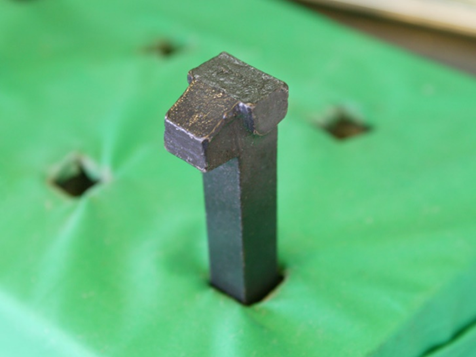
Dog Spike
Tennen-Gas, CC BY-SA 3.0 <http://creativecommons.org/licenses/by-sa/3.0/>,
via Wikimedia Commons
Then came the invention of the base plate. It provided lateral support. This helped to keep the rails in their current gauge which was 4 foot 8 1/2 inches. Even with the base plate, the spikes were still used.
Even in the beginnings until 1846, each railroad decided what gauge their railroad would be built at. Anywhere between the three feet for what was called a narrow gauge. The Gauge debate was not just on this side of the pond, England had it too, but not just as loud as the Americans were.
In England each company made the decision on the gauge of their track. This was causing so much trouble and was costly for the railroad, especially the product. When they tried to standardize the width, each company argued for their size, no one wanted to change.
George Stephenson, who came to be known as the father of the railroad infrastructure, preferred 4 foot 8 1/2 inches. It meant greater stability, also the train could go faster, and more safely. The rest of the companies saw the benefits and followed. Then England passed the Gauge Act on August 18, 1846, making it the standard throughout the country.
In the United States it wasn't quite that easy. We too, let each railroad decide which gauge they wanted. Tracks from two different railroads would come into a city or town, one side would be a narrow gauge of 3 feet 6 inches, while the other railroad would be a broader gauge of 5 feet.
Product being hauled by one train with the other railroad was supposed to take it on to the next destination. The railroad workers would have to unload the first train by hand and transfer the product to the other car of the different gauge size. Passengers would also have to gather their luggage and transfer it and their families to the other train.
It was not only that, the two railroads often had their own depot on the opposite ends of town and were a mile apart. So, the transferred product and families would also have to be transferred that mile also. It was kind of funny, but the families usually did not complain because this was the fastest way of traveling any distance.
This was causing so much trouble and was costly for the railroad, especially the product. When they tried to standardize the width, each company argued for their size, no one wanted to change, especially the south.
In the south the Charleston and Hamburg built their railroad at a 5-foot gauge. This caused the surrounding states to build theirs at the same gauge so they would be able to operate with them. So, by 1861, 7000 miles of track were of the wider gauge.
The state legislature established their state gauge would be 4 foot 10 inches. California chose a 5-foot gauge as theirs. Missouri and Texas also chose the different gauge of 6 foot. They believed a wider gauge track offered better stabilization of the train.
Canada chose theirs as a military strategy. Fearing the United States might invade their country, they set their gauge at 5 foot 6 inches so the United States trains could not operate on their tracks. The railroad could be an extremely important military asset. Transporting troops, ammunition, supplies and medical support to the troops.
By 1861, there were approximately 7000 miles of tracks of a wider gauge. With all the problems these different gauge tracks caused, it's set off the inventor’s imaginations. There were many attempts at innovation to help relieve the gauge problem.
One way was what was called a Compromise car. What was different with these cars was the wheel width. They increased in width to 5 inches from the normal 4 inches. What this was supposed to accomplish was to allow these cars to transfer from the standard size tracks to 4-foot 10 inch, 1 ½ inches wider.
Thousands of these cars were produced. Their hopes were high, but the cars only worked on some of the railroad’s tracks. Another problem was they did not work on the southern tracks.
Some of the problems where the wheels would slip off the tracks. Of course, this was a major problem, it would cause derailments. With derailments, this caused loss of revenue, loss of infrastructure and most importantly, loss of life. Such was at Angela, New York, two of the Compromise cars derailed. The coal stoves that were aboard the trains overturned during the derailment and set everything on fire. Forty-nine people lost their lives in this accident.
Charles Tisdale’s invention was met with great expectations. In 1863, Tisdale came up with the car wheels be placed on a bar so the wheels could be adjusted manually to fit either a wide or narrow-gauge tracks as needed. The only problem was they were prone to derailments.
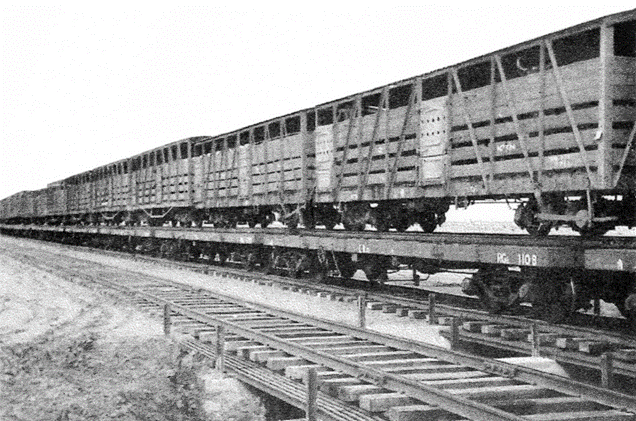
CC BY 4.0 is the Australian Government's default copyright licence. The Open Data Policy ( ) includes the direction: "all government agencies should make non-sensitive data open by default, and it should be free, easy to use, and reliable. Agencies should publish anonymised data ... under a Creative Commons BY Attribution licence." ( ), CC BY 4.0, https://commons.wikimedia.org/w/index.php?curid=94973916
Another invention was a wide-gauge car that allowed the narrow-gauge car to be hoisted atop it. See the above picture. This might have seemed a good idea on paper, but when you put a heavy object atop another, it becomes top heavy. This is what happened with these cars. They became top heavy, again a possible derailment hazard. Another problem was the broader gauge cars could not be set upon the narrow-gauge cars.
There were many of these inventions, but none worked.
Some companies came up with the idea to lay a third rail inside or outside of the existing rails. This would accommodate two different sized gauge trains.

Whitman County, Washington, a railroad train on dual gauge tracks is on the embankment.
Washington State Digital Archives, Public domain, via Wikimedia Commons
The United States finally decided that they could not keep operating this way. So, some of the large railroads started to convert their lines to standard gauge. They also decided that the conversion would be accomplished in a single day.
The Illinois Central hired 3,000 men to convert their entire 547-mile system in one day. The Louisville and Nashville Railroad also decided to switch theirs in one day. So, they hired 8,000 men to convert their 2,000 miles system in one day too.
Due to the Civil War and reconstruction, the South was slower to convert to standard gauge. By the end of the 19th century most of the railroads were in the United States were changed over.
Canada finally got over their fear of the United States invading their country. So, they too change over to the standard gauge. This was to allow products to be traded between the two countries.6
Along with the standard gauge there were other important pieces of infrastructure that was being invented or built upon.
England invented a lot of the parts of the railroad, but for some, they used the ideals of others before them. They invented a lot of the infrastructure and equipment we still use today.
On the American side we had our fair share of inventions too. Some of the inventors and their inventions were:
- Peter Cooper, who built Tom Thumb, the first successful American steam locomotive.

Replica of Thom Thumb
Miscellaneous Items in High Demand,
PPOC, Library of Congress, Public domain, via Wikimedia Commons
- Also, Greenville Woods, who invented the Railroad Telegraph, whereby using static electricity a message could be sent between two moving trains.
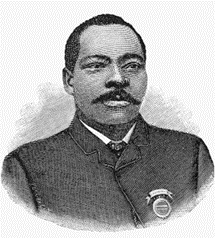
By William J. Simmons Public Domain
https://commons.wikimedia.org/w/index.php?curid=13337016
Robert Stevens, who we saw earlier invented the “T” rail and the spike that firmly holds the rail in place.
Ref:
- Brian Solomon’s book Railway Maintenance, and Men and Machines That Keep The Railroads Running.
- The Transcontinental Railroad, A History of Railroad Technology, Standardization of American Rail Gauge from the Linda Hall Library